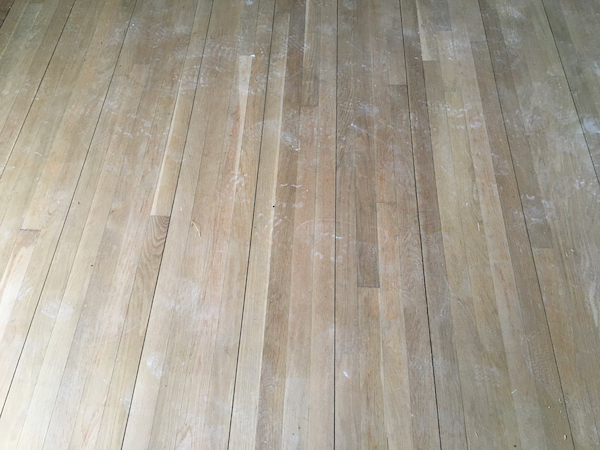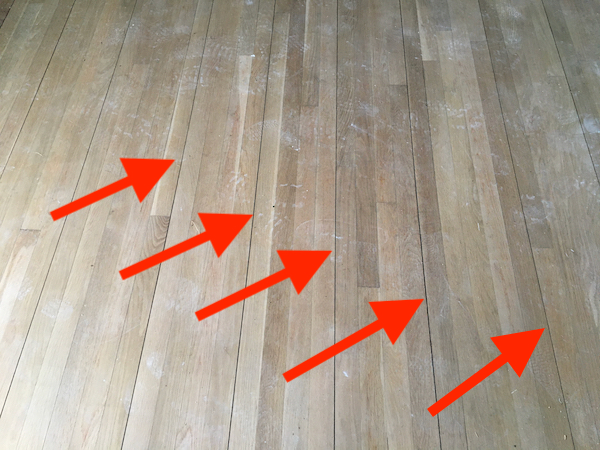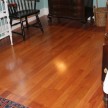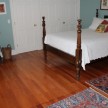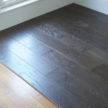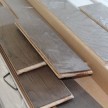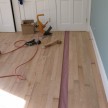Open Seams In Hardwood Flooring
Oak Floor Installed Parallel with Plank Subfloor – Results In Seams
I recently looked at a house for sale with Oak floors. The second I walked into the house I noticed multiple open seams in the hardwood flooring. The weird part was that these seams were evenly spaced approximately every 7 to 8 inches. The reason for these consistent and uniform seams is MOST likely caused by installing the hardwood floor in the same direction as the plank subfloor. When the old plank boards expand and contract, they take the hardwood boards with then – resulting in seams.
Another cause of open seams in hardwood flooring is called side bonding. Side bonding occurs from waterbased finish contributing to the gaps. Early on the waterbased finish didn’t have a sealer to go with it.
Installation of Hardwood Flooring Over Plank Subfloor
If you’re laying a new wood floor over an old plank subfloor, there are several things you need to take into consideration.
Plank subfloors are usually made up of 3/4″ thick x 6-8″ wide Southern Yellow Pine boards. This type of sub-flooring is usually found in older homes and can loosen up over time from the boards expanding and contracting.
4 Tips For Preventing Open Seams in Hardwood Flooring
- Allow your new flooring to acclimate to its new location, humidity levels.
- Allow for expansion and contraction of your new flooring by leaving an expansion gap of 10-15mm around your whole room.
- Install your hardwood flooring perpendicular to the subfloor plank boards
- If the sub-floor is in poor condition, or you need to run the hardwood floor in the same direction, install a plywood subfloor.
Install Hardwood Flooring Perpendicular To Subfloor
3/4″ thick Solid Wood Flooring must be installed across the subfloor boards (at a 90-degree angle). If the hardwood flooring is installed parallel to the direction of the plank subfloor the new wood floors could pull apart leaving open gaps if the underlayment planks expand/contract or the edges cup upwards.
It is very important to remember to re-secure the plank subfloor boards to the floor joists using 2-1/2″ deck screws or ring-shank nails. this will help prevent annoying squeaks.
Running Hardwood Flooring Parallel
If you have to run the wood flooring parallel with the subfloor boards you must install an additional layer of 3/8″ or 1/2″ thick plywood underlayment glued and screwed down over the plank subfloor.
Engineered, and 1/2″ Thick Flooring
Engineered flooring or flooring less than 1/2″ thick can be installed over a wood plank subfloor as long as the 3/4″ plank subfloor is flat. The hardwood flooring must be installed crossing the subfloor boards (90-degree angle).
Dealing with Deflection and Poor Subfloor Conditions
If there is any deflection in the subfloor when walked on it would be advisable to add an additional layer of 3/8″ or 1/2″ thick plywood underlayment glued and screwed down over the wood plank subfloor to add stability to weak subfloors. Doing this will also allow you to run your new wood flooring in any direction desired.
Don’t Forget To Install Rosin Paper
Rosin paper is designed to help with squeaks between the subfloors, but you are better off fixing the squeaks before installing the flooring.



